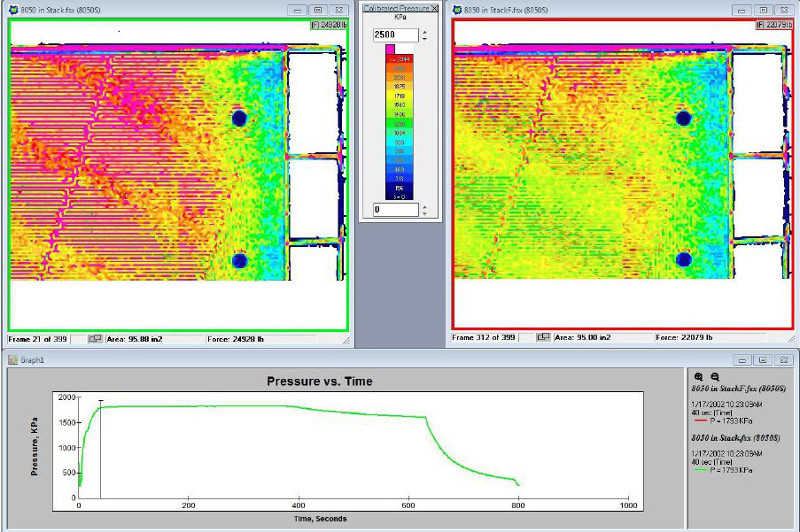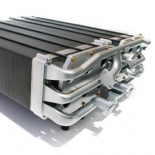Measurement & Analysis Of Fuel Cell Pressure Distribution
In a fuel cell, numerous thin plates are stacked in close proximity to separate the flows of hydrogen or hydrocarbons and oxygen. In addition to proper stacking pressure, applied clamping torque may also affect contact distribution within a fuel cell. A recent study, conducted by the University of Messina, Italy examines this procedure.
Challenge
Maintaining and improving the uniformity of the contact pressure between these plates over a large area is an important factor in the design and performance of fuel cells. Eliminating parasitic leakage paths is essential to obtaining efficient operation in fuel cell stack design.
Solution
 Pressure around ports and in flow field before and after pressurization.
Pressure around ports and in flow field before and after pressurization.
The I-Scan™ pressure measurement system offers fuel cell manufacturers tremendous insight into the behavior of components and assembly alternatives. Data from I-Scan allows for direct comparison of the pressure patterns from different designs thus saving time in design verification and re-engineering costs. Sensors are available in different shapes and pressure ranges, are reusable, and provide accurate pressure data. With the help of Tekscan's highly qualified sales and engineering support team, each system can be configured to meet your specific needs.
Fuel Cell Pressure Measurement Applications
- Identify peak pressures, localized pressure, and spatial pressure
- R&D for new fuel cells
- Design validation testing
Benefits of Pressure Mapping
- Improve assembly technique
- Improve clamping fixtures
- Determine which materials are best for uniform contact distribution
See how Pressure Mapping Technology can be a useful tool to help validate the assembly of a product or device:

